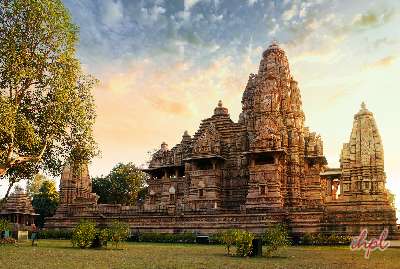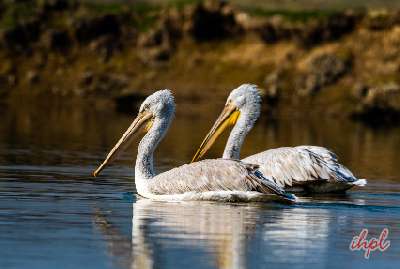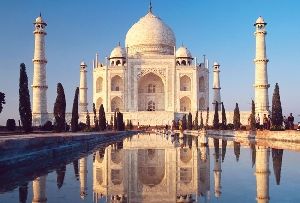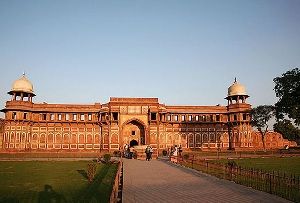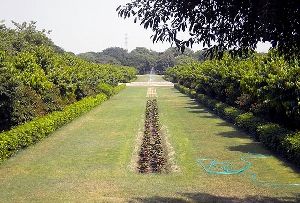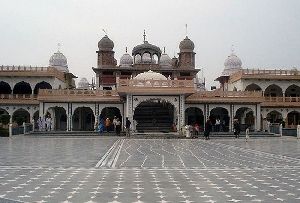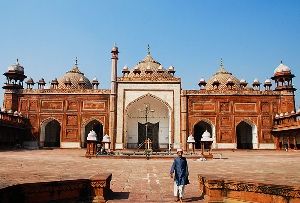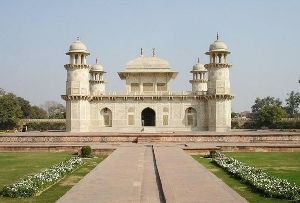Location – Moti Bagh, Agra
Timings –Everday – 6:00 AM to 6:30 PM
Ticket Price – Indian Visitors: INR 30, Foreign Visitors: INR 310 (as per ASI), Free for Children below 15
Ticket Availability – On-site or online through ASI (Archeological Survey of India)
Activity Duration – Approximately 1-2 hours to explore all major attractions
Planning a Trip? Speak to an expert
Itmad-ud-Daulah, also known as Baby Taj, is a tomb of Mirza Ghiyas Beg. It is the first white marble tomb in India and the inspiration behind the architecture of the Taj Mahal. This structure is nestled on the eastern bank of Yamuna and settled amidst a Persian-styled garden. It is famous for its stone inlay work, which is made from wine glasses with a perfect geometric structure. All these are enough reasons to plan a visit to this tomb.
History
This tomb was built between 1622 and 1628 by wife of the emperor Jahangir, Nur Jahan. She dedicated it to her father, Mirza Ghiyas Beg, also known as Itmad-Ud-Daulah. It took six years to build this Tomb, but each aspect is worth witnessing from every angle.Architecture
Itmad-ud Daulah is a square tomb with octangular towers and chhatris. Moreover, each side has three aches, two of which are closed by jaalis (latticework screens), and the central one serves as the entrance to the Tomb. While entering this structure, you will find bold inlaid designs in white marble. Whereas floral, geometric, and tree-like patterns are displayed throughout the structure. Overall, the architecture of Baby Taj resembles a Jewel Box set amid a garden. Hence, it is also known as the Jewel Box of Agra.Point of Interest
There are so many places apart from this tomb that you can explore on this site.- Eastern Gate The use of white marble, combined with semi-precious stones, creates a striking contrast that exemplify the finesse of Persian craftsmanship.
- Charbagh Garden This lush, well-maintained garden is decorated with geometric flowerbeds and pathways, making it visually appealing and offer peaceful setting.
- Yamuna View Terrace It’s the perfect spot for sunset viewing, photography, and relaxation. Near the terrace, there are several rooms in which you will find tombs of other relatives of Nur Jahan.
Checkout: Vrindavan Tour Packages, Agra Tour Packages, Uttar Pradesh Tour Packages, Varanasi Tour Packages, Mathura Tour Packages, Kushinagar Tour Packages
Best Time to Visit
The ideal time to visit this Tomb in Agra is the winter season, from October to March, when the weather is most pleasant for sightseeing. For the best experience, plan your visit during the early morning or evening hours, around sunrise or sunset.
For more tips on planning your trip, refer to our Agra guide.
Note: If you are visiting during summer, try exploring between 4-6 PM or early in the morning.
How to Reach
By Air: The tomb is approximately 11 km from Agra Airport. You can hire a taxi or cab to reach the monument within 30 minutes.
By Train: The tomb is around 5 km from Agra Fort Railway Station. Upon arrival, you’ll find various transport options like taxis, auto rickshaws, and buses.
By Road: If you’re driving to Agra, the Yamuna Expressway, NH2, NH19, NH44, and NH43 are the major highways connecting Agra with key cities across the country.
Local Transport: Upon arriving in Agra, you can easily reach the tomb using local transport options such as buses, rickshaws, and e-rickshaws. For a more comfortable ride, you may also opt to book a private cab or hire a taxi (OLA / Uber).
Places to Visit Near Itmad-Ud-Daulah
You can combine your trip with other major monuments of Agra, which are located in the near proximity:- Taj Mahal (6.7 km – 25 min)
- Agra Fort ( 4.4 km – 15 min)
- Mehtab Bagh (3.1 km – 12 min)
- Chini Ka Rauza (1.1 km – 5 min)
Travel Tips
- Spend the evening here to admire the sunset from its multistoried pavilion.
- Keep an eye on your belongings—playful monkeys might make a surprise appearance in the garden.
- Do not forget to bring your camera, as each side and element of this site is click-worthy.
- You’ll need to remove your footwear to enter the Tomb, so a visit at noon might be a bit of a foot-burning adventure.
For a tailored travel experience, consider checking out Agra tours page that include visits to the Tomb of Itimad Ud Daulah and other significant landmarks.




